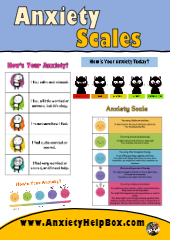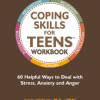 The Social Anxiety Disorder (SAD) Diagnostic Checklist aligns with the DSM-5 criteria for diagnosing Social Anxiety Disorder. This checklist aids in assessing whether an individual meets the necessary diagnostic criteria based on specific, observable symptoms that should be sustained for at least six months. It provides a structured approach for mental health professionals to evaluate the presence and persistence of social anxiety symptoms and their impact on daily functioning.
The Social Anxiety Disorder (SAD) Diagnostic Checklist aligns with the DSM-5 criteria for diagnosing Social Anxiety Disorder. This checklist aids in assessing whether an individual meets the necessary diagnostic criteria based on specific, observable symptoms that should be sustained for at least six months. It provides a structured approach for mental health professionals to evaluate the presence and persistence of social anxiety symptoms and their impact on daily functioning.
Key Diagnostic Criteria:
-
Marked Fear in Social Situations: The individual must exhibit significant fear or anxiety in social scenarios, such as interactions with unfamiliar people or performing in front of others. In children, this anxiety must be evident in peer settings.
-
Fear of Negative Evaluation: The individual fears they will act in a way that invites negative judgement or embarrassment, leading to social avoidance or intense anxiety in social settings.
-
Reaction to Social Situations: Social scenarios almost always provoke fear, often resulting in avoidance or significant discomfort. For children, this may include crying, freezing, or clinging.
-
Disproportionate Response: The fear or anxiety should be out of proportion to the actual threat posed by the situation, considering cultural and social norms.
-
Persistence and Impact: Symptoms must persist for six months or more and significantly impair social, occupational, or other important functioning areas.
-
Exclusion of Other Causes: The symptoms must not be attributable to other medical conditions, substance effects, or other mental health disorders (such as panic disorder or autism spectrum disorder).
The checklist ensures a thorough assessment for clinicians, clarifying if the anxiety observed aligns with Social Anxiety Disorder or if it may be better explained by other factors. This tool is helpful in structured diagnosis, supporting mental health professionals in delivering appropriate care plans.
FREE PDF DOWNLOAD OF SOCIAL ANXIETY DISORDER (SAD) DIAGNOSTIC CHECKLIST








